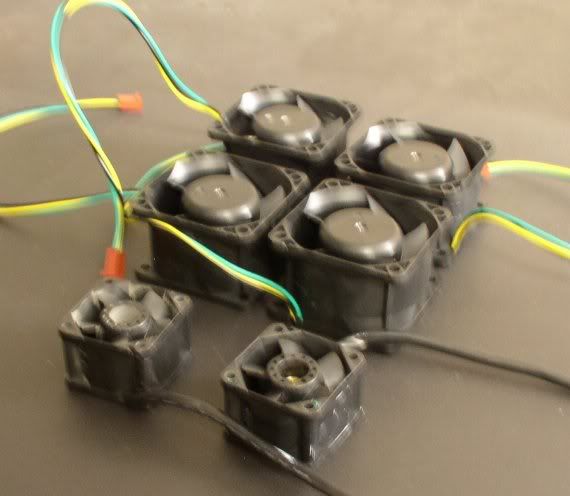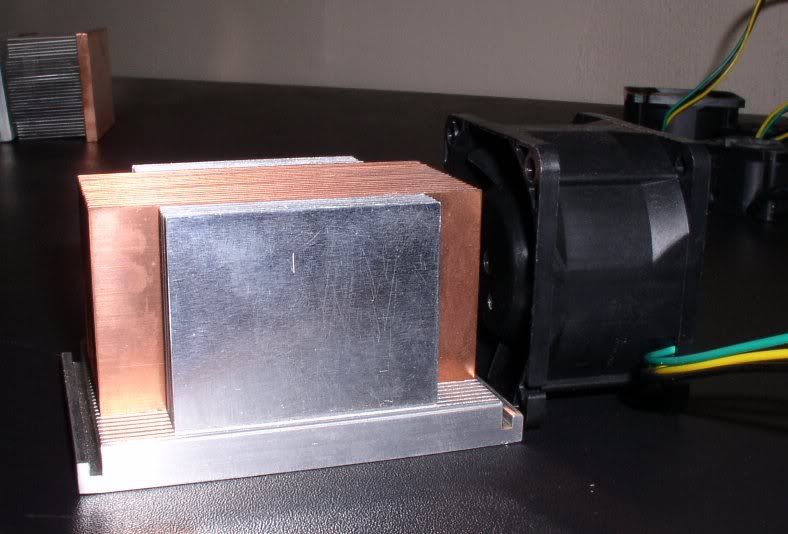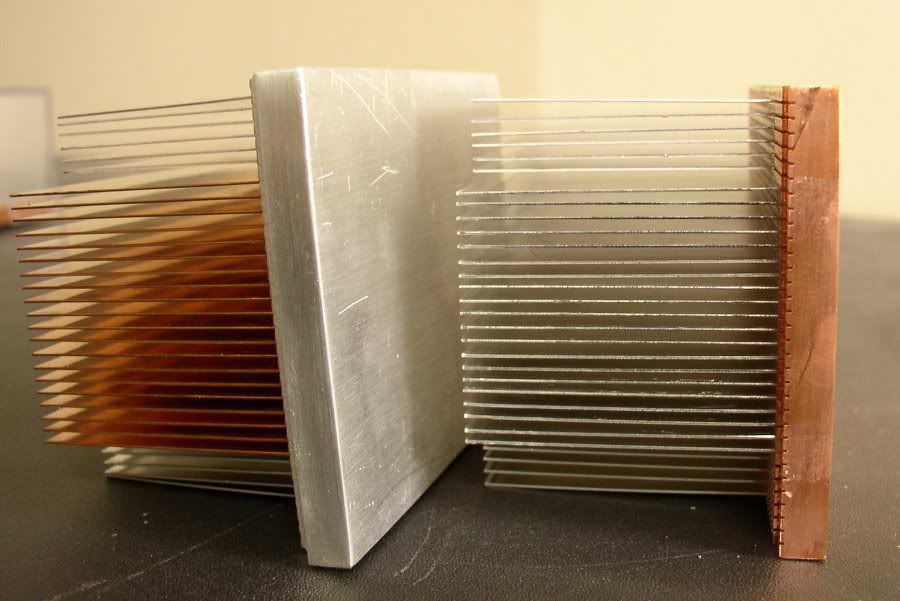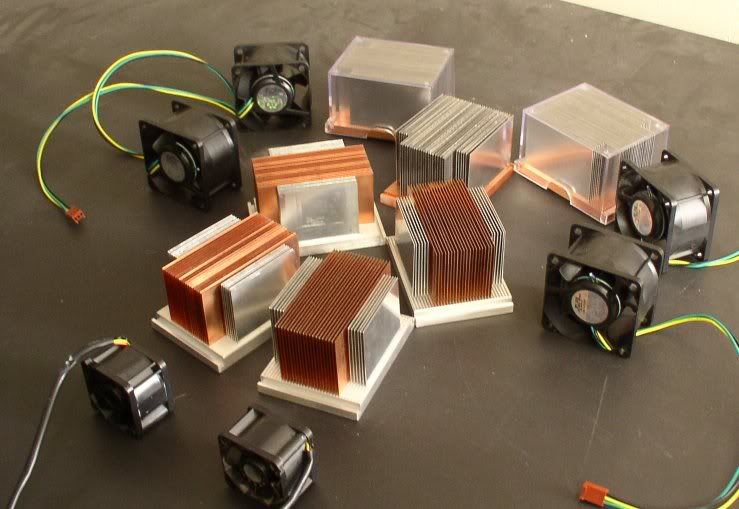Quicksilver
Limp Gawd
- Joined
- Jan 13, 2003
- Messages
- 139
So I've had these sitting around for ages:


They're the stock heatsinks that come with 2.2 GHZ and 3.0 GHz Xeon processers. Each one is DAMN heavy and full of copper and aluminium.
I've also got these fans


I've been sittin' on these for a while too. Each one is DAMN LOUD. Ever heard a Vantec Tornado before? Yeah, about as loud as those. But they kick out some gale-force winds.



With all this cooling power just idleing around, I'm getting pretty antsy to use it.
So I have a watercooled computer, and I really like it.

But I want to take it to the next level! I want to use all that air cooling gear plus a pair of 72 watt peltiers and an appropriate waterblock to build a WATERCHILLER!
Now I know all about the risks of condensation on the cooling loop, and the extreme electrical demands of a peltier system, but I think I have a way around that.
I see people building external watercooling enclosures for their gear all the time. Personaly, I dislike the idea of an external enclosure for watercooling, and I built my first system fully integrated into the chassis.
However, if I build an external waterchilling unit that was also housed the watercooling elements and the associated powersupplies for both water cooler and waterchiller, then I'd have a reason to justify the clumsy external box.
So how to go about using TEC's to make a waterchiller? I have a home made waterblock that exactly fits the two 72W TECs perfectly side by side. I was thinking that I'd put one peltier on each side of the block, and put two heatsinks on each side.

Each HS would have a high output 60mm fan on it and the whole thing would be in an enclosure with an "air tunnel", a large fan sucking air in one side and a large fan blowing air out the other side.
All this would come after the radiator in the watercooling loop. This is so that the water can be as close to room temperature as possible before entering the chiller.
So, what do you guys think? Can it be done?


They're the stock heatsinks that come with 2.2 GHZ and 3.0 GHz Xeon processers. Each one is DAMN heavy and full of copper and aluminium.
I've also got these fans


I've been sittin' on these for a while too. Each one is DAMN LOUD. Ever heard a Vantec Tornado before? Yeah, about as loud as those. But they kick out some gale-force winds.



With all this cooling power just idleing around, I'm getting pretty antsy to use it.
So I have a watercooled computer, and I really like it.

But I want to take it to the next level! I want to use all that air cooling gear plus a pair of 72 watt peltiers and an appropriate waterblock to build a WATERCHILLER!
Now I know all about the risks of condensation on the cooling loop, and the extreme electrical demands of a peltier system, but I think I have a way around that.
I see people building external watercooling enclosures for their gear all the time. Personaly, I dislike the idea of an external enclosure for watercooling, and I built my first system fully integrated into the chassis.
However, if I build an external waterchilling unit that was also housed the watercooling elements and the associated powersupplies for both water cooler and waterchiller, then I'd have a reason to justify the clumsy external box.
So how to go about using TEC's to make a waterchiller? I have a home made waterblock that exactly fits the two 72W TECs perfectly side by side. I was thinking that I'd put one peltier on each side of the block, and put two heatsinks on each side.

Each HS would have a high output 60mm fan on it and the whole thing would be in an enclosure with an "air tunnel", a large fan sucking air in one side and a large fan blowing air out the other side.
All this would come after the radiator in the watercooling loop. This is so that the water can be as close to room temperature as possible before entering the chiller.
So, what do you guys think? Can it be done?
![[H]ard|Forum](/styles/hardforum/xenforo/logo_dark.png)